It looks like you're using an Ad Blocker.
Please white-list or disable AboveTopSecret.com in your ad-blocking tool.
Thank you.
Some features of ATS will be disabled while you continue to use an ad-blocker.
5
share:
I am opening this thread, so future Details of Finds located within the Rich and Diverse Region can be presented and reviewed without the need to
Single Out separate Threads.
And I believe it IS one of the Richest and Diverse Regions on this planet.
Archaeologists Set to Find Largest Coin Treasure in Bulgaria, or so the news is.
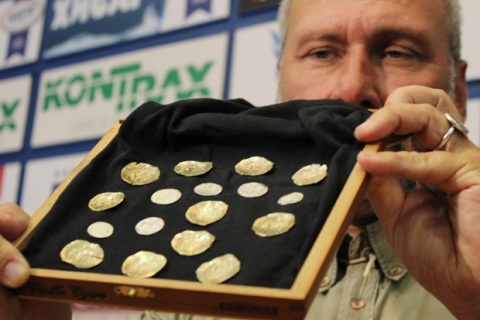 Top archaeologist, Prof. Nikolay Ovcharov, known as the Bulgarian Indiana Jones, present the coins recently discovered at
Perperikon.
Top archaeologist, Prof. Nikolay Ovcharov, known as the Bulgarian Indiana Jones, present the coins recently discovered at
Perperikon.
They have been looking through the Ancient City, and believe they have found an area to investigate further. The Crapper.
Truly a Remarkable Land with only one thing to offer. HISTORY.
Ciao
Shane
And I believe it IS one of the Richest and Diverse Regions on this planet.
Archaeologists Set to Find Largest Coin Treasure in Bulgaria, or so the news is.

Bulgarian archaeologists expect to find at the holy rock city of Perperikon the largest ever medieval coin treasure in the country.
The announcement was made by leading Bulgarian archaeologist, Prof. Nikolay Ovcharov, after his team recently found a total 11 gold and 6 silver coins.
The gold coins are from the 14th century while the silver ones are from the end of the 13th century.
They have been looking through the Ancient City, and believe they have found an area to investigate further. The Crapper.
The coins were found in the central town of Perperikon, near the Citadel, in the area believed to have been the residence of the very wealthy bishops.
Ovcharov says the excavations there are continuing with expectations to discover more than 50 other gold coins.
The latest finds also include an intricate silver frame of a still-undated icon.
There is ongoing research at the two churches in the southeast area of the Acropolis while two tombs, most likely bishop ones, will be opened next week.
Ovcharov informs that the site enjoys lasting strong interest from local and foreign visitors with an increased flow of those from neighboring Romania and Turkey.
The unique Ancient Thracian city of Perperikon was first discovered in 1979 in the Eastern Rhodoppe Mountains. It is thought that the famous sanctuary and oracular shrine dedicated to Dionysus of the Bessi tribe was situated there. The ancient rock city contains remains from all archaeological periods.
Ovcharov also discovered nearby an ancient Thracian surface tomb in the village of Tatul, containing a sanctuary linked with the cult of Orpheus.
Truly a Remarkable Land with only one thing to offer. HISTORY.
Ciao
Shane
While I was here, Hey, Thrace came up with more news.
Archaeologists Find Thracian Town on Bulgarian Sea Coast
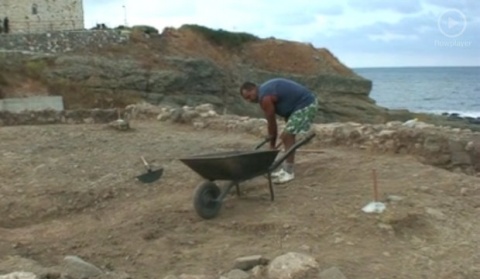 The first ever archaeology excavations in the southern Black Sea town of Tsarevo are already yielding precious finds. Photo
by BGNES
The first ever archaeology excavations in the southern Black Sea town of Tsarevo are already yielding precious finds. Photo
by BGNES
Always something being found, and from all Ages.
Ciao
Shane
Archaeologists Find Thracian Town on Bulgarian Sea Coast
Bulgarian archaeologists have discovered a Thracian settlement during the first ever excavations in the town of Tsarevo on the southern Black Sea coast.
The team is led by Milen Nikolov, an archaeologist from the Regional History Museum in the Black Sea city of Burgas.
The settlement is very close in location to the town church "Uspenie Bogorodichno." The find proves that Tsarevo and nearby areas have a history more ancient that what was believed until now.
During the excavations, the archaeologists have found remnants showing that as early as the 4th – 5th century BC Thracians have built a town that existed until the 1st century AC.
Nikolov explains the discovery is a 2 500-year history rewind, saying the finds further include a four-wick lamp, tomb gifts, and a number of vessels

Always something being found, and from all Ages.
Ciao
Shane
Excavation of two tombs to begin at
Bulgaria’s Perperikon
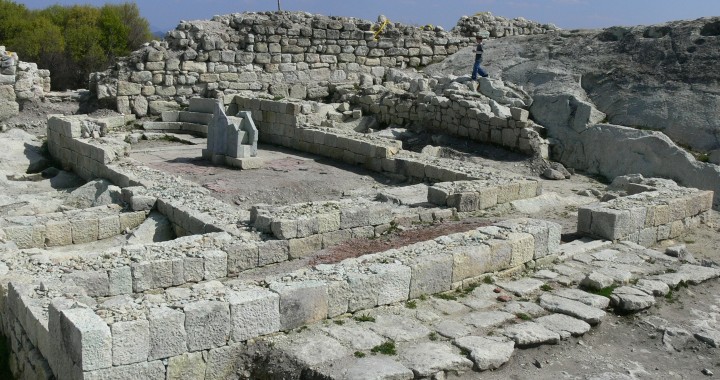
And in case some may not be certain of the importance of this specific City, I suggest you could review this Link and see just how Ancient this Place actually is.
Ciao
Shane

Excavation of two previously unopened tombs at Bulgaria’s ancient sacred site of Perperikon was to begin on August 15 2012, archaeology professor Nikolai Ovcharov said.
The two tombs are made of large stone blocks. Ovcharov said that they were expected to provide very important information about the history of Perperikon in the Middle Ages.
This archaeological season, digs are taking place in the acropolis of the site, where Ovcharov’s team of archaeologists expects to find the Episcopal residence of the 13th to 14th century.
So far, archaeologists have discovered more than 100 graves from the 13th to 14th century. A further 15 are to be explored.
Ovcharov said that a week ago, some of the golden treasure of the bishops of Perperikon had been discovered, 11 gold and six silver coins.
This was part of a treasure, part of which was removed about 20 years ago by looters. Ovcharov said that the treasure originally had included about 50 gold coins.
And in case some may not be certain of the importance of this specific City, I suggest you could review this Link and see just how Ancient this Place actually is.
Ciao
Shane
reply to post by Shane
See, the thing I love about ATS is that sometimes amid all the drivel, there are gems of interesting information here and there. I have never heard of this place until you presented this, OP, so I love having my eyes opened to new stuff. Am now off to do some reading on this. Much appreciated. Thanks.
See, the thing I love about ATS is that sometimes amid all the drivel, there are gems of interesting information here and there. I have never heard of this place until you presented this, OP, so I love having my eyes opened to new stuff. Am now off to do some reading on this. Much appreciated. Thanks.
As the End of the Season of Discovering approaches, there where some items dealing with the area of Apollonia in print the last few days.
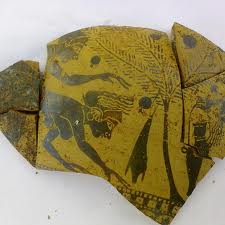
Bulgarian archaeologist discover necropolis of ancient Apollonia in Sozopol
And another 6 BC find came just in the end of the season there.
Incense vessel in shape of bull’s head found on island off Bulgaria’s Sozopol
Looking forward to see what this Item looks like. When I find a Photo, I will paste it here.
Ciao
Shane

Bulgarian archaeologist discover necropolis of ancient Apollonia in Sozopol
Sozopol. Bulgarian archaeologists discovered a necropolis of ancient Apollonia in the coastal town of Sozopol, Director of the Museum of History in Sozopol Dimitar Nedev announced for FOCUS News Agency.
In Nedev’s words, the burial was found in the northern part of the narthex of the three-naved basilica under the levels of the two churches.
“The situation is the following: two churches – one from VI and another from the VII century, with equal period of construction, and another one of the X century, existing until XVII century. In the outlines of the northern part of the narthex, we found the beginning of the level of ancient Apollonia and it is of the earliest period. A burial of a young woman was discovered – with only one utensils for scents, and the woman was pregnant, probably died during the pregnancy,” Nedev explained.
“Today we found the burial of a small child, mayby aged up to 3 years (anthropologically the age is of 0 to 5 years), but we suppose it is aged around 3, since the legs are very small (around 10 centimetres). The burial was done in an amphora from the Samos island, which is dated to the beginning of the third quarter of the VI century before Christ. This is the same chronological border we set when we found the vase with the erotic scenes; a little bit earlier than this period.”
And another 6 BC find came just in the end of the season there.
Incense vessel in shape of bull’s head found on island off Bulgaria’s Sozopol
An ancient incense vessel in the shape of a bull’s head, estimated to date from the sixth century BCE, has been found by archaeologists on St Kirik island off the Bulgarian Black Sea town of Sozopol.
The discovery was made on the last hour of the last day of the 2012 summer archaeological season.
Public broadcaster Bulgarian National Television quoted John Stevenson, a Harvard student volunteer working on the dig, as saying that the find was a great surprise and one of the most interesting made this season.
Archaeologist Dragomir Garbov said that the vessel probably was used by the earliest settlers in Apollonia Pontica, an ancient name for Sozopol.
The head of archaeological excavations, Kristina Panayotova, said that the find was “very rare”, the only such incense vessel in the shape of a bull’s head that had been found in Bulgaria.
“This really is the crown of our work on St. Kirik even just for this season,” Panayotova said.
Thirty-five volunteers, including archaeological students from the United States, Canada and the UK, joined in the work on St Kirik island this archaeological season.
Looking forward to see what this Item looks like. When I find a Photo, I will paste it here.
Ciao
Shane
An article titled Bulgarian Archaeologists Find Fresh Gold Coins at Perperikon, does
reflect some on the material noted in the first opening intro, but there are also other considerations being presented or suggested.
It will be interesting next season, to see where they get on this aspect of this Ancient Thracian City.
Ciao
Shane
The archaeological season at Perperikon has concluded with researchers saying they have found new evidence that this was the place of the mythical shrine of Dionysus.
During the last days of excavations, they also unearthed a clay altar, with a 2-meter diameter, used for religious rites.
The unique Ancient Thracian city of Perperikon was first discovered in 1979 in the Eastern Rhodoppe Mountains. It is thought that the famous sanctuary and oracular shrine dedicated to Dionysus of the Bessi tribe was situated there. The ancient rock city contains remains from all archaeological periods.
It will be interesting next season, to see where they get on this aspect of this Ancient Thracian City.
Ciao
Shane
In general the archaeology progress of the Balkans is well behind western Europe. I suspect we'll find a number of other intersting cultures in that
area which will add some footnotes to ancient history
reply to post by Hanslune
I agree with you my friend.
I have some personal views about this portion of the globe, and I think there will be a RE-Written History of mankind that will be sourced directly from the Black Sea Region. Someday anyways.
Ciao
Shane
I agree with you my friend.
I have some personal views about this portion of the globe, and I think there will be a RE-Written History of mankind that will be sourced directly from the Black Sea Region. Someday anyways.
Ciao
Shane
reply to post by Shane
Although the following photo was not spoken of in the accompanying article, I believe it is a stunning piece of an ancient past that deserves to be presented for what it is.
The marginal reference that is presented with the photo does not specify this item, but it may be the previously noted incense burner found earlier this season. But then it "maybe" the "Vessel" noted below that held the found coins.
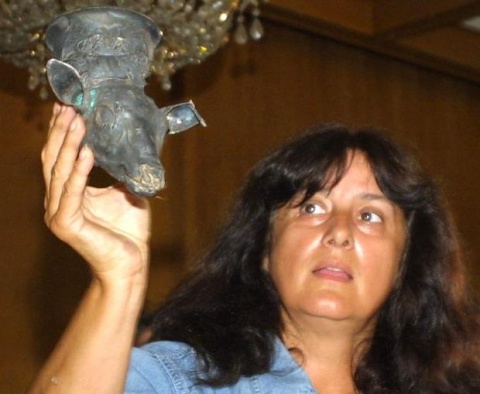
A file photo shows Bulgarian archaeologist Prof. Daniela Agre with an Ancient Thracian find. Photo by Politika newspaper
This was found in the following article Bulgarian Archaeologists Find Coin Treasure on Black Sea Coast thats speaks of a find in the village of Sinemorets.
And to fall back into a more Ancient Past, Scientists now believe the OLDEST Historical European Town has been located within this remarkable region.
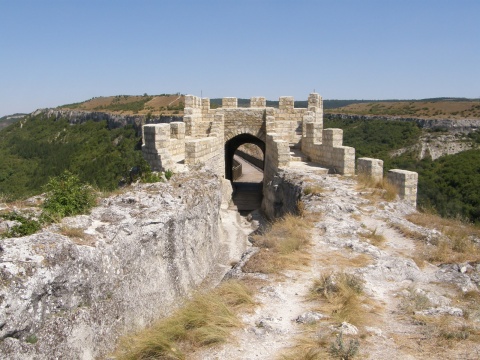
A file photo of the Ovech fortress near Bulgaria's Provadiya.
This region does not stop giving up it's past.
What could possibly be next?
Ciao
Shane
Although the following photo was not spoken of in the accompanying article, I believe it is a stunning piece of an ancient past that deserves to be presented for what it is.
The marginal reference that is presented with the photo does not specify this item, but it may be the previously noted incense burner found earlier this season. But then it "maybe" the "Vessel" noted below that held the found coins.

A file photo shows Bulgarian archaeologist Prof. Daniela Agre with an Ancient Thracian find. Photo by Politika newspaper
This was found in the following article Bulgarian Archaeologists Find Coin Treasure on Black Sea Coast thats speaks of a find in the village of Sinemorets.
Prof. Agre explained the vessel containing the coins was found buried next to a tower of the fortified home of an Ancient Thracian ruler that has been known to the Bulgarian archaeologists since 2006.
The archaeologist pointed out that there are only a few cases in which coin treasures of such scope have been found during excavations in Bulgaria.
She believes the coins in question were most likely minted by Alexander the Great or his officer and successor Lysimachus. Agre promised to provide more information later.
And to fall back into a more Ancient Past, Scientists now believe the OLDEST Historical European Town has been located within this remarkable region.

A file photo of the Ovech fortress near Bulgaria's Provadiya.
The oldest historical town in Europe is located near the saltpans in the vicinity of the Bulgarian northeastern town of Provadiya in the Varna region.
The discovery has been made by Prof. Vasil Nikolov, from the National Archaeology Institute and Museum in the capital Sofia, the Bulgarian 24 Chassa (24 Hours) daily writes Sunday.
For many years, Nikolov had been studying the Thracian mount in the yard of the Provadiya salt factory. The scientist says that it was precisely the salt production that caused the establishing of the town there over 6 500 years ago.
Prior to this discovery, archaeologists proved that this has been the location of the first salt factory in Europe.
Prehistoric people molded the spice in the shape of bars and stored it nearby. Then scientists came upon stone walls built before 4700 BC. The bastions protected from raids the produced salt, which had very high value, compared to today's oil prices.
Prof. Nikolov's discoveries have been confirmed so far by scientists from Japan, Great Britain and Germany, who follow closely research in Provadiya saltpans.
This region does not stop giving up it's past.
What could possibly be next?
Ciao
Shane
I found the following which spoke again of this Ancient Village located in Bulgaria.
Bulgaria claims to find Europe's oldest town
The Article also spoke of the Salt Industry and made an interesting comment.
The Oldest Gold Treasure in the World???????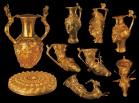
There is a vibrant history about to bloom here, and we all will see it blossom before us.
And a Photo of this settlement.
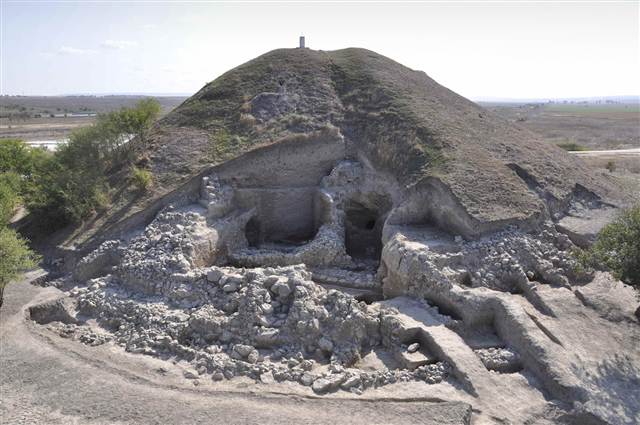
"A general view shows the remains of a stone defensive wall that enclosed an ancient town near Provadia, 255 miles (410 kilometers) northeast of Sofia, Bulgaria."
And incase we forget, this is the second such dated site in Bulgaria, the other namely Perperikon
Ciao
Shane
Bulgaria claims to find Europe's oldest town
SOFIA, Bulgaria — A prehistoric town unearthed in eastern Bulgaria is the oldest urban settlement found to date in Europe, a Bulgarian archaeologist said Thursday.
Vasil Nikolov, a professor from Bulgaria's National Institute of Archaeology, said the stone walls excavated by his team near the town of Provadia are estimated to date between 4700 and 4200 B.C. He said the walls, which are 6 feet (3 meters) high and 4.5 feet (2 meters) thick, are believed to be the earliest and most massive fortifications from Europe's prehistory.
"We started excavation work in 2005, but only after this archaeological season did we gather enough evidence to back up this claim," Nikolov told The Associated Press.
The team has so far unearthed remains of a settlement of two-story houses with a diameter of about 300 feet (100 meters), encircled by a fortified wall.
Excavations have also uncovered a series of pits used for rituals as well as parts of a gate. Nikolov said carbon analysis has dated them to the Chalcolithic age — more than a millennium before the start of the ancient Greek civilization.
"New samples of the excavations have been sent to the University of Cologne, Germany, for further evaluation," Nikolov said.
Bulgaria, a Balkan country of 7.3 million, hosts numerous Neolithic, Chalcolithic and Bronze Age settlement mounds as well as significant remains of Hellenistic, Roman and Byzantine urban centers.
The Article also spoke of the Salt Industry and made an interesting comment.
"They boiled brine from salt springs in kilns, baked it into bricks, which were then exchanged for other commodities with neighboring tribes," Nikolov said, citing as possible evidence the gold and copper jewelry and artifacts that have been unearthed in the region.
The most valuable is a collection of 3,000 gold pieces unearthed 40 years ago near the Black Sea city of Varna. It is believed to be the oldest gold treasure in the world.
The Oldest Gold Treasure in the World???????

There is a vibrant history about to bloom here, and we all will see it blossom before us.
And a Photo of this settlement.

"A general view shows the remains of a stone defensive wall that enclosed an ancient town near Provadia, 255 miles (410 kilometers) northeast of Sofia, Bulgaria."
And incase we forget, this is the second such dated site in Bulgaria, the other namely Perperikon
Ciao
Shane
new topics
-
ILLUMINATION: Dimensions / Degrees – Da Vincis Last Supper And The Philosophers Stone
Secret Societies: 4 hours ago -
Just Sick of It! Done! Can't take it anymore!
General Chit Chat: 5 hours ago -
Speaking of Pandemics
General Conspiracies: 7 hours ago -
Stuck Farmer And His Queue Jumping Spawn
Rant: 7 hours ago
top topics
-
Joe Biden gives the USA's Highest Civilian Honor Award to Hillary Clinton and George Soros.
US Political Madness: 17 hours ago, 15 flags -
Speaking of Pandemics
General Conspiracies: 7 hours ago, 8 flags -
Paradox of Progress
Ancient & Lost Civilizations: 15 hours ago, 7 flags -
ILLUMINATION: Dimensions / Degrees – Da Vincis Last Supper And The Philosophers Stone
Secret Societies: 4 hours ago, 6 flags -
Just Sick of It! Done! Can't take it anymore!
General Chit Chat: 5 hours ago, 4 flags -
Stuck Farmer And His Queue Jumping Spawn
Rant: 7 hours ago, 3 flags
active topics
-
Just Sick of It! Done! Can't take it anymore!
General Chit Chat • 8 • : BeyondKnowledge3 -
DONALD J. TRUMP - TIME's Most Extraordinary Person of the Year 2024.
Mainstream News • 47 • : Oldcarpy2 -
Paradox of Progress
Ancient & Lost Civilizations • 6 • : Asktheanimals -
Tesla Cybertruck Explodes in Front of Trump Hotel in Las Vegas
Mainstream News • 225 • : BeyondKnowledge3 -
Musk calls on King Charles III to dissolve Parliament over Oldham sex grooming gangs
Mainstream News • 132 • : Oldcarpy2 -
Winter Storm
Fragile Earth • 26 • : Asktheanimals -
-@TH3WH17ERABB17- -Q- ---TIME TO SHOW THE WORLD--- -Part- --44--
Dissecting Disinformation • 3932 • : NightFlight -
NJ Drones tied to Tesla explosion at Trump Las vegas
General Conspiracies • 52 • : BeyondKnowledge3 -
What Is 'Quad Demic'? Mask Mandate Returns In These US States
Diseases and Pandemics • 34 • : marg6043 -
ILLUMINATION: Dimensions / Degrees – Da Vincis Last Supper And The Philosophers Stone
Secret Societies • 3 • : CarlLaFong
5
